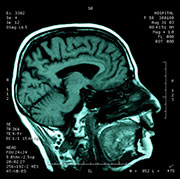
TUESDAY, July 14, 2015 (HealthDay News) — In a new study, brain scans reveal that women formerly addicted to stimulant drugs, such as cocaine and methamphetamine, have a smaller amount of a type of brain tissue known as “gray matter.”
This was true even though the women hadn’t used the drugs for about a year before undergoing the brain scans, the study said.
The research also hints, but cannot prove, that these drugs take a greater toll on addicted women’s brains compared to men who had been dependent on the same drugs. Compared to healthy men, formerly drug-dependent men showed little to no changes in their brain scans, the study authors noted.
“Gray matter is important because it is where signals are generated in the brain that gives us the ability to think, move and behave,” explained study author Dr. Jody Tanabe, a professor of radiology from the University of Colorado School of Medicine in Aurora, Colo.
Exactly why these changes are occurring in the brain’s gray matter volume in women still isn’t clear, the study authors noted. “Since the brain consists of numerous cells and the spaces between cells, we do not know if some of the cells die, become smaller, or if the spaces between the cells become smaller,” Tanabe said.
Findings from the study were published online July 14 in the journal Radiology.
For the study, researchers wanted to see how the brains of people previously dependent on stimulants compared to the brains of healthy people, and if they differed by gender.
Scientists reviewed brain MRI exams in 127 men and women. The study included 59 people (28 women and 31 men) who were previously dependent on cocaine, amphetamines and/or methamphetamine. They were dependent on drugs for an average of nearly 16 years, the study said. The study also included 68 healthy (“control” group) participants (28 women and 40 men) who were similar in age to those who had been addicted to drugs.
All of the previously dependent men and women in the study had been abstinent from stimulant-drug use for an average of 13.5 months at the time of the brain scans.
Compared to the women in the control group and the men in the study, the previously dependent women had less gray matter volume, according to the brain scans.
“We are not sure why differences were so pronounced in the women but not the men in this study,” said Tanabe. “In fact, men had overall more drug-related symptoms than women so the results were somewhat surprising. Men and women did not differ in their drug exposure (regarding the various types of drugs they were exposed to), abstinence, or years of drug use. It may be that our findings reflect behavioral and personality differences.”
Vaughan Rees is a professor of social and behavioral sciences at Harvard School of Medicine in Boston. Rees pointed out that whether or not there are differences in the nervous systems of female substance abusers is something researchers have wondered, “but rigorous evidence has rarely been shown. This study rigorously demonstrates that gray matter volume is lower among female former users,” Rees said.
However, the association between brain volume and stimulant-drug use seen in women in the study does not prove a cause-and-effect relationship.
Rees added that while the data from this study cannot tell us whether the difference in gray matter volume occurs as a result of stimulant use or pre-exists addiction, evidence from other studies cited by the authors suggests that brain differences might have been present before the women started using drugs.
“These findings may help to shed light on the greater severity of drug-use symptoms experienced by females, including escalation of drug use, larger quantities used and greater difficulty quitting compared with males,” suggested Rees, who was not involved with the study.
Tanabe added that the new “study adds to the growing body of evidence that gender plays a significant role in studies looking at brain structure and function in addictions. Future studies need to focus on mechanisms of these differences and how they impact behavior.”
More information
For more on drug addiction, visit the U.S. National Institute on Drug Abuse.
Copyright © 2025 HealthDay. All rights reserved.

